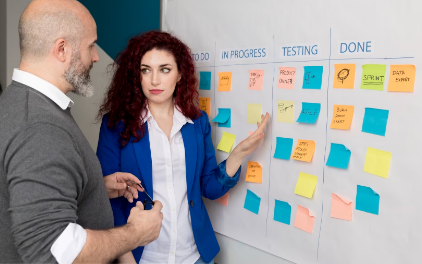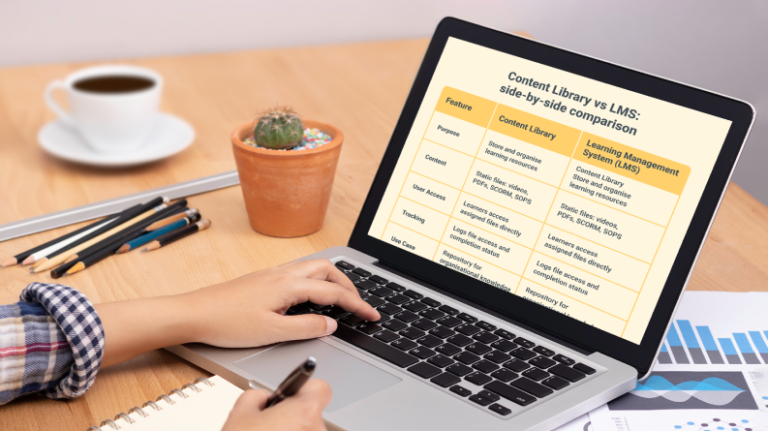Online learning, e-learning, and virtual learning. Whatever you call it, there are modern approaches to learning that you can use to enhance your skill set in any area. In this article, we will delve into the principles of Agile learning, its benefits, and how it can be applied in various educational settings.
What is agile learning?
Agile learning is a modern educational approach that draws inspiration from the Agile software development methodology. It emphasizes flexibility, collaboration, and adaptability in the learning process.
Why is agile learning important?
Agile learning holds significant importance in the modern educational landscape due to the following reasons:
- Adaptability: Agile learning equips learners with the skills to adapt and thrive in rapidly evolving environments, fostering resilience and preparedness for future challenges.
- Lifelong learning: Agile learning promotes a culture of continuous learning, enabling individuals to stay curious, seek knowledge, and keep up with emerging trends and advancements.
- Real-world relevance: Agile learning emphasizes the application of knowledge in practical contexts, bridging the gap between theory and practice.
- Engagement: Agile learning promotes active engagement, motivation, and a sense of achievement through manageable tasks and incremental progress.
- Customised learning paths: Agile learning allows learners to personalise their educational journey, focusing on areas of interest and progressing at their own pace.
- Critical thinking: Agile learning nurtures critical thinking skills, stimulating creativity and the ability to propose innovative solutions.
Agile learning empowers learners to adapt, engage, collaborate, and think critically, preparing them for lifelong learning and success in a dynamic world.
What is the difference between agile learning and learning agility?
While both agile learning and learning agility involve adaptability and flexibility in the learning process, they have different meanings and applications. Here’s an overview of the key distinctions between agile learning and learning agility:
Agile Learning: Agile learning refers to an educational approach that draws inspiration from the Agile software development methodology. It emphasizes iterative and incremental learning, collaboration, flexibility, and continuous improvement. Agile learning is typically applied within specific learning environments, such as classrooms, online courses, or project-based learning settings. It focuses on breaking down learning goals into smaller, manageable tasks, fostering collaboration among learners, and adapting learning strategies based on feedback and reflection.
Learning Agility: Learning agility refers to an individual’s ability to quickly learn, adapt, and apply new knowledge and skills in different situations or contexts. It is a personal attribute or competency that encompasses cognitive, behavioural, and emotional aspects. Learning agility extends to various life experiences and work environments. Individuals with high learning agility are open to new ideas, embrace change, seek diverse learning opportunities, and readily adjust their approaches to tackle unfamiliar challenges.
Who is responsible for implementing agile learning in a business?
In a business setting, the successful implementation of agile learning requires collaboration among:
- Leadership: set the vision and create a supportive environment that embraces agile learning principles. They can allocate resources, provide support, and encourage a culture of continuous learning.
- Human Resources (HR): facilitate the implementation by aligning learning and development initiatives with agile methodologies and promoting the adoption of agile learning practices.
- Learning and development teams: design and deliver agile learning programs, curate relevant resources, and provide training and guidance to employees.
Together, they create an environment that fosters continuous learning and empowers employees to embrace agile practices.
What do you need to start agile learning?
To start implementing agile learning, you need a few key elements.
- Firstly, a clear understanding of agile learning principles and methodologies is essential. This includes knowledge of iterative and incremental learning, flexibility, collaboration, and continuous improvement.
- You need a supportive learning environment that encourages active engagement, collaboration, and experimentation. This may involve creating spaces for teamwork, providing access to relevant resources and technology, and fostering a culture of open communication and feedback.
- A willingness to embrace change and adapt your learning approaches based on feedback and reflection.
By combining these elements, you can begin implementing agile learning and reap its benefits in your educational journey.
What are the topics covered by the Agile learning process?
The Agile learning process covers various important topics that contribute to effective and dynamic learning. These topics include iterative and incremental learning, where concepts and skills are broken down into manageable chunks for focused development.
- Collaboration and teamwork are emphasized, promoting effective communication, cooperation, and knowledge sharing among learners.
- Adaptability and flexibility are central to agile learning, encouraging learners to embrace change, explore alternative approaches, and adjust strategies accordingly.
- Reflective practices and continuous improvement are also integral, fostering self-awareness, goal setting, and the ability to learn from both successes and failures.
How to harness the power of agile learning effectively?
To harness the power of agile learning effectively, there are a few key strategies to consider.
- Establish clear learning goals and break them down into smaller, achievable tasks or increments.
- Foster a collaborative and supportive learning environment where learners can engage in discussions, share knowledge, and provide feedback to one another.
- Embrace flexibility and adaptability by encouraging learners to explore different approaches, experiment with new ideas, and adjust strategies based on feedback and reflection.
- Promote continuous improvement through regular self-assessment, goal setting, and reflection on learning outcomes.
- Leverage technology and online resources to facilitate access to learning materials, promote interaction, and enable self-paced learning.
By employing these strategies, you can effectively harness the power of agile learning in your educational endeavours.
What are the benefits of LMS for agile learning?
Learning Management Systems (LMS) offer several benefits for implementing agile learning. Some key advantages are:
- Flexible content delivery: LMS platforms enable the delivery of diverse learning content, including text, multimedia, interactive modules, and assessments. This flexibility allows for a variety of learning experiences and accommodates different learning styles.
- Progress tracking: LMS platforms offer features for tracking learner progress, including completion tracking, grading, and assessment feedback. This enables timely feedback on learning activities, ensuring learners stay on track and providing opportunities for iterative improvement.
- Personalised learning paths: An LMS can support personalised learning paths by allowing learners to set goals, track their progress, and access content tailored to their individual needs.
- Data analytics: LMS platforms often provide analytics and reporting features that offer insights into learner performance, engagement, and progress. These help instructors and learners make informed decisions, identify areas for improvement, and optimise the agile learning process.
Alison’s Learning Management Systems encompass these essential benefits and more, such as:
- Centralised learning environment: An LMS provides a centralised platform where learners can access learning materials, assignments, and resources. This streamlines the learning process and ensures the easy availability of content for agile learning.
- Accessibility and flexibility: LMS platforms can support anytime, anywhere access to learning materials, enabling learners to engage in agile learning at their convenience. This flexibility accommodates different schedules and learning preferences.
Agile learning offers a dynamic and adaptable approach to education, empowering learners to actively participate in their own learning process. By embracing collaboration, flexibility, and continuous improvement, learners can develop the skills necessary to thrive in a rapidly changing world.









